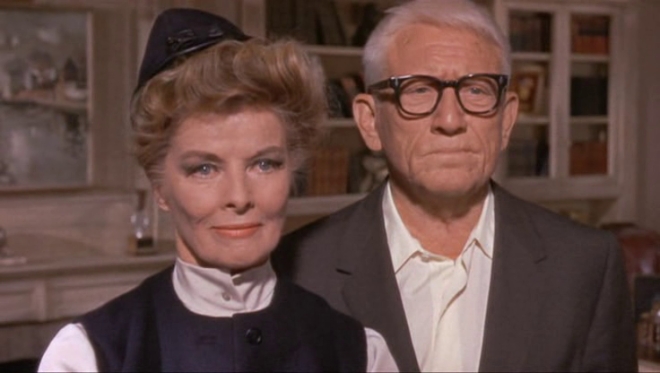At one point in Guess Who’s Coming to Dinner? Sidney Poitier, the African-American husband-to-be, tells Spencer Tracy, the father-of-the-bride, how their potential children may become Presidents of the United States. Poitier, lightening the mood, acknowledges that he’ll accept Secretary of State – of course, his wife-to-be is possibly too ambitious. Made in 1967, it seems the filmmakers weren’t too ambitious, and only six years prior to the cinema release date, in Kapiʻolani Maternity & Gynecological Hospital in Honolulu, Hawaii, Barack Hussein Obama II was born. It is difficult to imagine the era in fact. We know the horror stories and the necessity of the civil rights movement, depicted recently in Ava DuVernay’s Selma. But, born into a racially intolerant world, it is difficult to comprehend the abuse that afflicted the black populace of America. Bear in mind that, while the film was in cinemas, Martin Luther King was assassinated. This was a different time.
A taboo topic, Guess Who’s Coming to Dinner? introduces Joanna Drayton (Katherine Houghton) hopping off a plane with her lover Dr. John Wayde Prentice Jr (Poitier). They talk casually about the inevitable shock her parents (Hepburn and Tracy, ending a nine-film run together) will receive. Mrs Drayton is shocked but accepting, while Mr Drayton is more concerned. Crucially for their safety – and the inevitable abuse their child would receive. The final act introduces John’s parents also, who are equally concerned about the future. The maid, Tilly (Isabel Sanford), is vocal about her frustrations, explaining how she dislikes anyone who is acting ‘above himself’. Director Stanley Kramer jumps from couples sparring and awkward group moments comfortably. Though clearly structured to emphasise the various opinions and positions taken, he resolves the film comfortably with a finale that accepts change, albeit without all parties agreeing on the issue – but a sense that, in time, they will.
Inevitably perhaps, watching within the 21st Century, Guess Who’s Coming to Dinner? seems awfully twee, and reeks of a sentimentality that is simply at odds with our current perspective. The reason the interracial marriage wins over the bride’s father is because they’re “in love” - something clear from the outset, but it takes him the duration to accept. Star performances from Spencer Tracy, Sidney Poitier and (the BFI season dedicated to) Katherine Hepburn are outstanding, and full of warmth. The film was Tracy’s last (dying only 17 days after production) and, in one scene, the final monologue took six days to shoot. It is clearly a small-scale film, and it could easily be a play off-Broadway rather than appearing on the silver screen. But its message is clear – change is coming and your masculinity, traditional expectations and fear won’t stop the glorious future that waits.
This is what makes cinema endlessly fascinating. For all its flaws, this is a moment in history. Spencer Tracy’s final film captures attitudes in an era that I, for one, wasn’t present for. Imagine if cinema was available as an art form during the French Revolution – what conversations and situations would be presented? The last 100 years of cinema has meant that every momentous, historical occasion has a library of films that run alongside the event. Guess Who’s Coming to Dinner? joins In the Heat of the Night and To Kill a Mockingbird as key films in an era that changed the future of the western world.
This post was originally written for Flickering Myth in March 2015



No comments:
Post a Comment
Copyright 2008-2015. All posts & reviews are property of www.simoncolumb.wordpress.com/Simon Columb and should not be reproduced in whole, or in part, without express permission from the author.